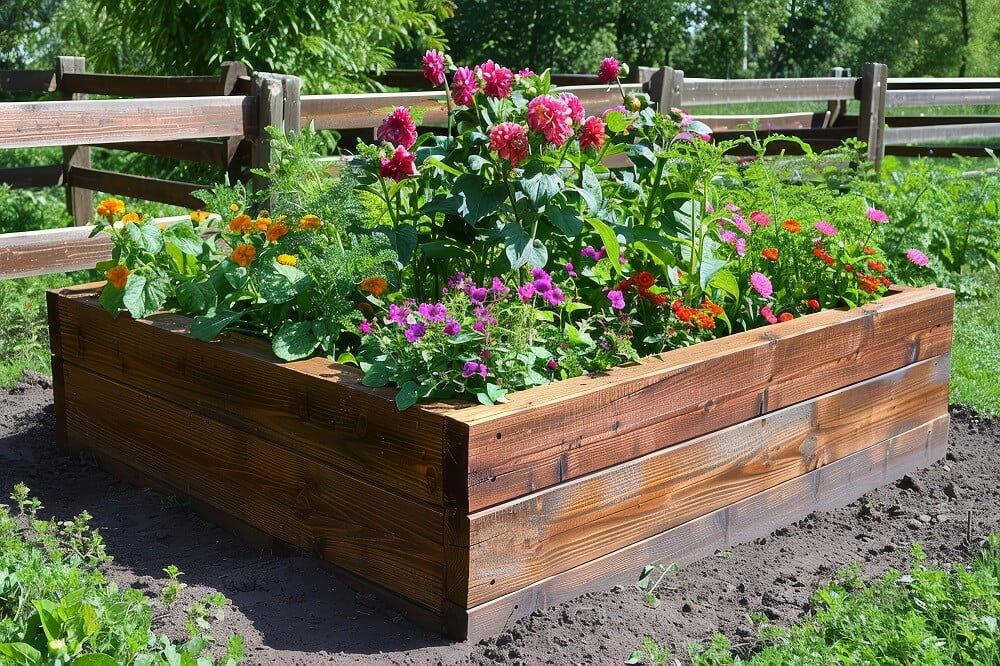
Bed fencing is a key element in any well-planned garden, providing numerous benefits both aesthetically and practically. First and foremost, bed fencing helps to keep things tidy, preventing plants from spreading into neighbouring areas and reducing the spread of weeds. This gives the plants better conditions for growth, which translates into health and beauty. In addition, a properly chosen fence has a decorative function, adding beauty and structure to the entire garden. It can accentuate the style of the garden — from rustic to modern — and blend harmoniously with other landscaping elements. In addition, flowerbed fencing also provides a protective barrier against animals that may damage plants, such as dogs, cats or wild animals.
If you are wondering, what to fence in the flowerbeds, it is worth considering different types of garden edging. One popular choice is plastic garden edgingThey are characterised by their flexibility and ease of installation. They can be easily shaped, making them suitable for creating complex bed and path shapes. It is worth paying special attention to recycled models. Stone and concrete garden edging are characterised by high durability and an elegant appearance that blends in perfectly with modern gardens.
Metal garden edging is the ideal solution for those who appreciate modern and minimalist design. They are durable and resistant to weather conditions. Wooden garden edging delights with its natural look, which fits into any type of garden, adding warmth and cosiness to it. Choosing the right edging depends primarily on individual preferences and the style of the garden, but each of these solutions has its own undeniable advantages that are worth considering when deciding on what to fence in the flowerbeds.
Installing garden edging is a task you can do yourself, with a little planning and basic tools. First of all, you need to identify exactly where you want to install the edging and then mark out the lines with string or stakes to keep a straight or curved line as required. Next, it is a good idea to dig a narrow trench with a depth equivalent to half the height of the edging. This will ensure that the edging is firmly embedded in the ground. The next step is to lay the edging in the trench and check its level with a spirit level. For concrete or stone edging, it is a good idea to use a rubber hammer to gently tap and steady them. For plastic or metal edging, additional anchors or pins may be needed to provide stability. Once the edging is in place, the trench should be backfilled with soil, tamping well to avoid movement. Finally, it is a good idea to check the stability of the edging regularly, especially after heavy rainfall. Well-installed edging will last for many years, keeping your garden aesthetically pleasing and tidy.
Flowerbed fences can provide a practical and decorative feature in the garden, and one of the most versatile options is plastic edging. Available in a variety of colours and sizes, they are lightweight, easy to install and weatherproof. Plastic edging can be used to create a variety of flower bed arrangements that will add a modern and tidy look to your garden.
Plastic edging is great for creating curved flowerbeds that can gently meander through the garden, mimicking the natural shapes of the landscape. They can be easily cut, allowing you to form lines as desired — from simple geometric shapes to more complex patterns. The flexibility of the material makes it possible to create circular beds around trees or shrubs, enhancing their beauty and keeping the area around the plants clean. They can also be used to separate different surfaces, for example for beds covered with bark in different colours. Plastic edging is also great for vegetable gardens, where it can mark out precise lines of beds, making it easier to organise the space and look after the plants.